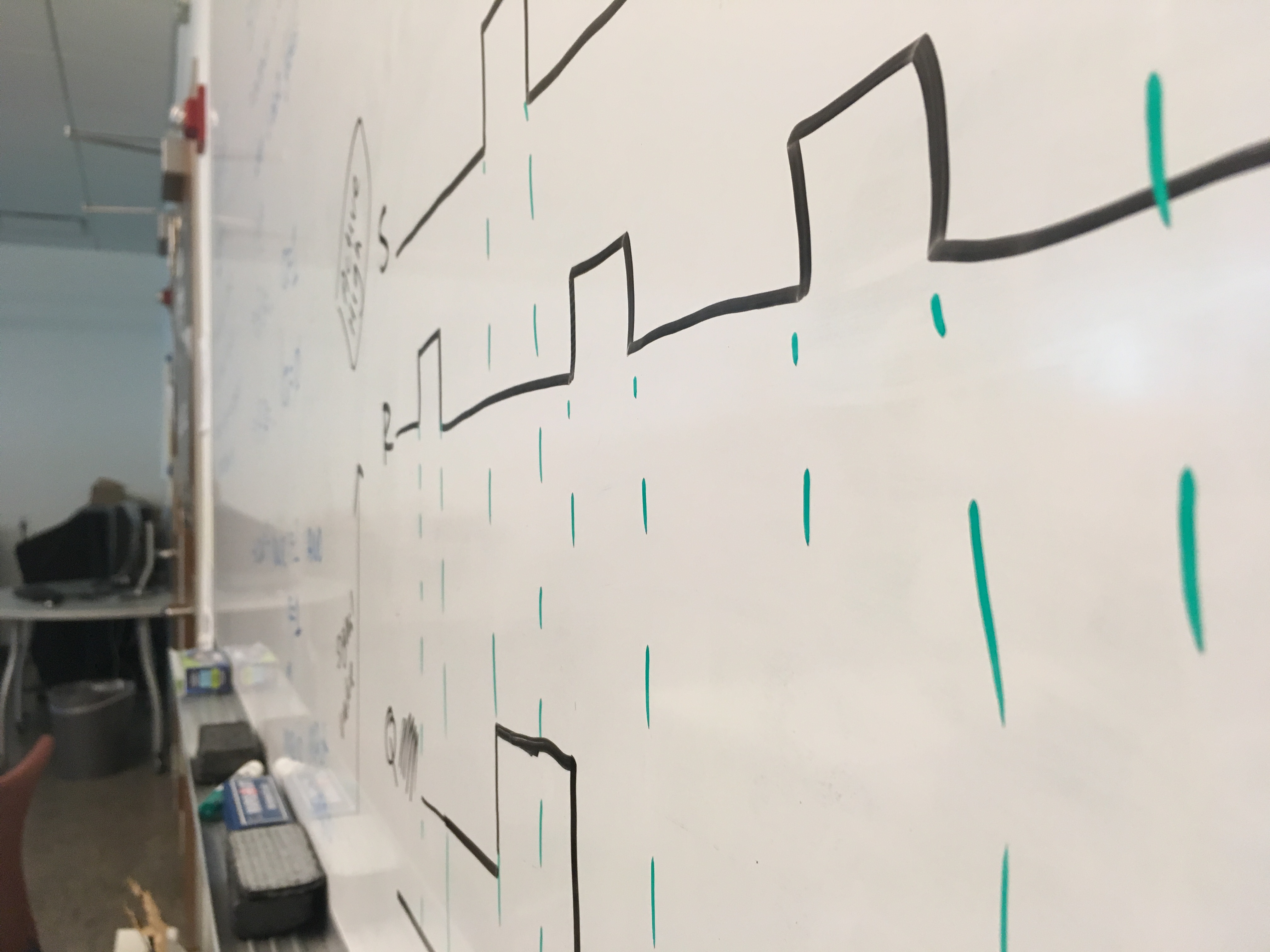Notes 0: Intro To Computing Systems
history of computing, computing levels of abstraction
Supplements
Who invented the computer?Notes 1: Integer Numbering Systems
unary, grouping, positional, decimal, octal, hexadecimal, binary
Supplements
Number Systems and Bases: Better Explained Introduction to number systems and binary: Khan Academy The Number Base Calculator: Cleave BooksNotes 2a: Combinational Logic 1
MOSFET transistors, PMOS, NMOS, logic gates, inverter, and, or, nand, nor, xor, xnor, Venn diagrams
Supplements
CMOS Transistors: Peter Mathys (watch 13:05 - 17:00)Notes 2b: Combinational Logic 2
digital circuit examples, sum of products (SOP), product of sums (POS), minterms, maxterms, programmable logic array (PLA)
Supplements
Minterms, Maxterms, and Cannonical Boolean Expressions: EngMicroLectures SOP and POS: Peter MathysNotes 2c: Combinational Logic 3
multiplexors, decoders, half adder, full adder, ripple-carry adder, ALU
Notes 3: Boolean Algebra
Boolean identities, De Morgan's Law
Supplements
Boolean Algebra: electronics-course.com Boolean Algebra Example: Peter Mathys NAND/NOR Only Example: Peter MathysNotes 4: Sequential Logic
SR latch, active high, active low, D latch, D flip-flop
Supplements
Timing Diagrams: EngMicroLectures SR Latches, D Latches, and D Flip-flops: EngMicroLectures SR Latch: Ben Eater SR Latch | NOR and NAND SR Latch: Neso Academy Registers, Flip-flops, and Modular Design: EngMicroLecturesNotes 5: Signed Integer Representation
signed numbers, sign magnitude, two’s complement, bias / excess notation, floating point, fixed point
Supplements
Two's Complement: Negative Numbers in Binary: Ben Eater Computer Science Concepts: Bias-K/Excess-K: Atiwong SuchatoNotes 6: Arithmetic and Logic Operations
carry out, overflow, bitwise, reduction, shifts, rotate
Supplements
Two's Complement Representation and Overflow: EngMicroLecturesNotes 7: Fractional Representation
fixed point, IEEE 754 single precision floating point
Supplements
Binary Fractions: Electronics TutorialsNotes 9: von Neumann Model
von Neumann architecture, memory, address space, addressibility, processing unit, control unit, input, output, memory
Notes 10: MIPS Instruction Set Architecture
general purpose registers, assembler directives, data directives, labels, instruction format, instruction types, operate instructions, data movement (loads and stores), control flow instructions, little endian, big endian, memory alignment, pseudo instructions, instruction encoding
Supplements
MIPS Reference Table: Rebecca Rashkin MIPS Instruction Format: Rebecca Rashkin Printable ASCII Characters: Rebecca RashkinNotes 11: MARS: MIPS Assembler and Runtime Simulator
memory display, syscalls
Supplements
MIPS Tutorial 1 Intro and Mars: Amell PeraltaNotes 12: MIPS Addressing Modes
register direct, immediate, register indirect, base + offset (displacement), PC relative, pseudo direct
Notes 13: Stacks and Subroutines
stack, jump instructions, return address, subroutines
Supplements
MIPS Videos: David Black-Schaffer (Videos 2.7 - 2.12)Notes 14: MIPS Data Path
mips data path, r-type, i-type, j-type, pc, register file, alu, control unit
